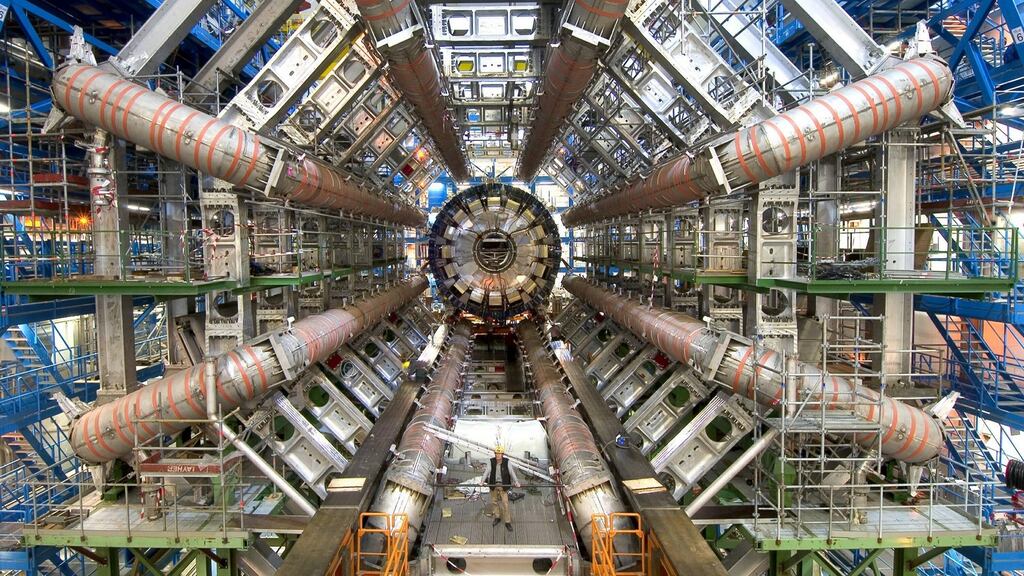The hottest place on Earth at the moment is not in a sun-baked desert or the superheated crucibles of a steel mill.
It is in a quiet corner of France, where temperatures of several trillion degrees are being achieved.
The hotspot involved is Cern, Europe’s centre for nuclear research on the French-Swiss border near Geneva.
The extreme temperatures are a result of Cern duplicating the impossibly hot conditions that last occurred when the Big Bang triggered the universe.
Cern is now ramping up the heat with the announcement on Wednesday that it will begin a month of experiments using its world record-breaking atom smasher the Large Hadron Collider.
The collider uses a 27km-long ring-shaped tube, around which it sends two beams of atomic particles moving in opposite directions.
The particles are moved along at close to the speed of light, which is itself a remarkable achievement.
However, the beams are also shifted to allow the particles to crash into one another at tremendous energies.
Cern has been setting records for this process over a number of years, but Wednesday marked the beginning of something new.
In the past it has smashed together protons - basically the nucleus of a hydrogen atom - which are very lightweight bits of matter.
It has also run collisions between protons and the nucleus of a lead atom.
World records
These earlier collisions set world records for the energies produced, which are measured in a unit called a TeV (Teraelectronvolt, or a million million electronvolts).
So far Cern has managed to push energies to a colossal 13 TeV. It may now double this by smashing together two beams of lead nuclei.
It took the past month to reset the collider in order to do this.
On Wednesday, Cern declared it had achieved “stable beams” of lead particles.
These will be the first lead-lead collisions to be achieved at close to light speed.
When they collide it will simulate what things were like just a few millionths of a second after the Big Bang.
When these collisions occur, it doesn’t just produce heat.
Smaller particles spray out in all directions, fundamental bits of matter that can only exist in the short-lived superheated conditions.
These particles are tracked and measured by experiments placed along the ring and the results help explain what the fundamental particles of matter actually are.
They also help to explain what happened next in the very early universe, when matter and big objects began to form following the Big Bang.
















